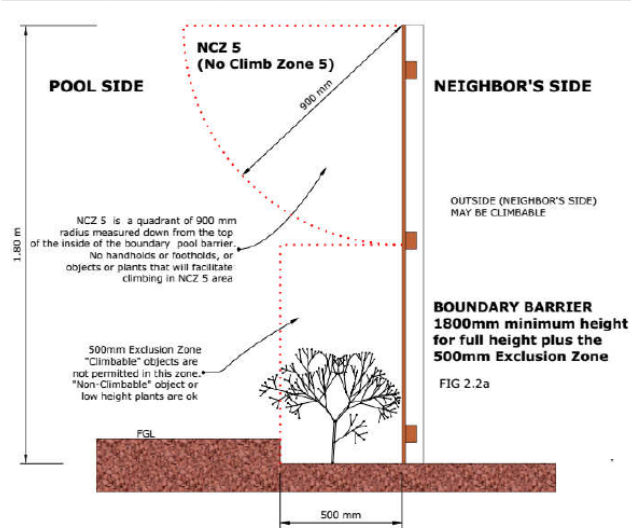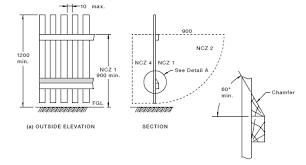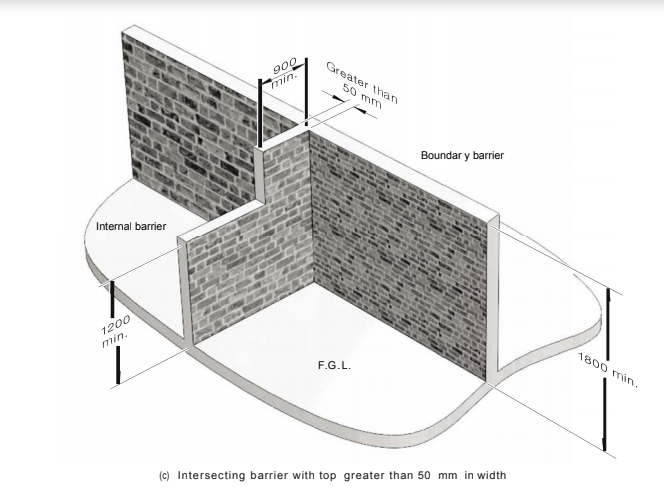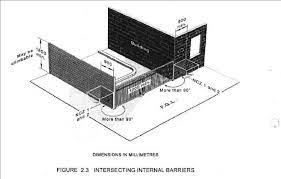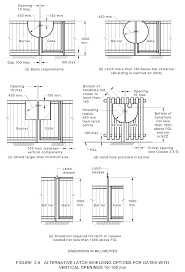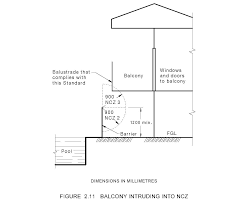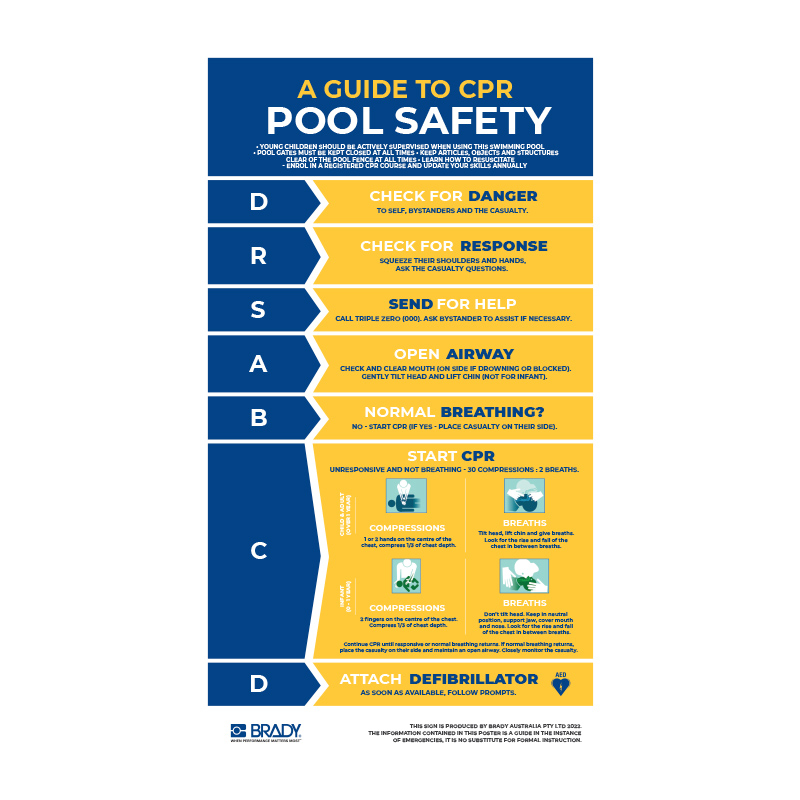Title Page
-
Swimming Pool Compliance Inspection conducted on
-
Result of the swimming pool barrier inspection
-
Date of notice to comply
-
This notification serves as notice that the owner has 6 weeks to rectify the areas of non-compliance highlighted within this report. If a Certificate of Compliance is not issued by the time stated in this section, the Registered Certifier must notify the Council. As your pool was assessed as Non-Compliant you can either: 1. Rectify all the breaches of non-compliance identified in this report and organise a pool compliance re-inspection, and when compliant, obtain a Certificate of Compliance. Or, 2. If for the purpose of selling the property attach the Certificate of Non-Compliance to the Contract of Sale. The buyer then has 90 days from the date of settlement to rectify the breaches of Non-Compliance and obtain a Certificate of Compliance. Or, 3. If the property is to be tenanted, the property must have a Certificate of Compliance attached to the lease. ** NB: If you wish to sell the property with a Certificate of Non-Compliance please indicate this to the Registered Certifier as soon as possible to avoid complications.
-
Document number
-
Property address/mapping location
-
Prepared for
-
Property lot number
-
Local Government Area
-
Property category
- Urban Property
- Small Property
- Large Property
- Waterfront Property
- Tourist/visitor Accommodation
- Multi-Occupancy 2+ dwellings
-
NSW Swimming Pool Registration Number
-
Re-inspection
-
Consultation at owners request
-
Prepared by
-
Street image
-
Site image
Contact details
-
Pool Owners Name
-
Pool Owners address (if different to property address)
-
Pool Owners telephone number
-
Pool Owners email address
-
Person interviewed
Pool details
-
When was the pool constructed (if known)
-
Type of pool
- Outdoor above ground pool
- Outdoor in ground pool
- Outdoor partial in ground pool
- Indoor pool
- Indoor spa pool
- Outdoor spa pool
- Inflatable pool >300mm
- Portable pool
- Partial indoor outdoor pool
-
Pool area image
Boundary/Pool Barrier
-
Is there a boundary fence or other child-resistant barrier separating the pool from the dwelling and adjoining properties and public spaces at all times?
-
Is the barrier a permanent and stable structure?
-
Is there any rusting or degradation of the barrier components?
-
If part or all of the barrier is glass, is it in good condition? If glass, no strength or rigidity testing is not required.
-
Is the internal pool barrier at least 1200mm high all the way around?
-
Are all fences of a suitable strength and rigidity and maintained in good order and repair?
-
If a boundary fence forms part of the pool barrier, does it meet the minimum height requirements of 1800mm high?
-
Is the gap between the bottom of the pool barrier and the ground no more than 100mm?
-
Is the gap between vertical or near vertical rails on the fence less then 100mm apart?
-
Is the finished ground level a permanent stable surface?
-
Is the barrier in a good state of repair as an effective and safe child resistant barrier?
-
If using perforated or mesh fencing, are the holes 13mm or less for fences <1200mm or 100mm or less for fences equal to or >1800mm ?
-
Are there no potential handholds and footholds within the required NCZ of the top of the pool fence on the outside of the pool barrier?
-
Are all projections or indents within any required non climbable zone on the approach side of the pool fence less than 10 mm?
-
Are there any climbable objects within the required 300 mm barrier clearance inside the the pool fence?
-
Do all stepped or raked panels comply with the clearances?
-
If the wall of the house forms part of the barrier, is the wall without windows, doors or other openings through which a young child could gain access at any time? If no, refer to doors and windows sections.
-
Is the location of the pool equipment compliant?
Non-climbable zones (NCZs)
-
AS1926.1-2012 2.2.1:
The height and radius of the arc of all NCZs (other than NCZ4) shall not be less than 900mm.
Within an NCZ there shall be no handholds or footholds, objects or plants that will facilitate climbing.
Where NCZs are required they shall apply to the entire length of a barrier. -
There are no features, steps, retaining walls, objects or level changes that would otherwise reduce the effective height of the barrier and are not located within 500mm on the outside of the barrier for barriers <1800mm?
-
Internal barriers not less than 1800mm do not require a NCZ and can be climbable on either side.
-
Does vegetation act as a foothold or a handhold or as an aid for climbing?
-
Can a component or feature be used as an aid for climbing the barrier and is it within the NCZ's?
-
Is NCZ 1 clear? Barriers <1800mm<br><br>NCZ 1 is a 900mm vertical plane measured on the outside of the barrier. There must be no handholds or footholds, or objects or plants that will facilitate climbing in NCZ. There must be no projections or indentations with a horizontal surface greater than 10mm. <br>*NB all horizontals with a greater than 10mm top surface in NCZ1 will need the surface sloped more than 60 degrees.
-
Is NCZ 2 clear? Barriers <1800mm<br><br>NCZ 2 is a quadrant measured from the outside of the barrier created by a 900m radius down from the top of NCZ 1. NCZ 2 is always immediately adjacent to NCZ 1 on all barriers. There must be no handholds or footholds, or objects or plants that will facilitate climbing in NCZ. <br>*NB all horizontals with a greater than 10mm top surface in NCZ2 will need the surface sloped more than 60 degrees.
-
Is NCZ 3 clear? Barriers <1800mm<br><br>NCZ 3 is a quadrant on the outside of a barrier created by a 900mm radius up from the top of the barrier. There must be no handholds or footholds, or objects or plants that will facilitate climbing in NCZ. Note: If the top of NCZ 1 is below the top of the barrier, NCZ 3 extends vertically down to the top of NCZ 1. Note: NCZ 3 does not apply to any item or component on, or that is part of the barrier. NZC 3 is applicable only to the space created by the quadrant.
-
Is NCZ 4 clear? Barriers <1800mm<br><br>NCZ 4 is a 900mm high by 300mm deep rectangular space on the inside of the barrier aligning with NCZ 1. <br>NOTE: NCZ 4 applies on all barriers with vertical openings 10-100mm in width. There must be no handholds or footholds, or objects or plants that will facilitate climbing in NCZ.
-
AS 1926.1 - 2012 2.2.4:
Where a boundary fence acts as a barrier to a pool, it shall have a height not less than 1800mm on the inside and NCZ5 formed as a quadrant of 900mm radius down from the top of the inside of the barrier.
AS 1926.1 - 2012 2.3.1:
Features and objects near a barrier, steps, retaining walls, objects or level changes that would otherwise reduce the height of a barrier within a property shall not be located within 500mm of the barrier. -
Is NCZ 5 clear? Boundary fence or barriers not less than 1800mm<br><br>NCZ 5 is a quadrant of 900mm radius, measured down from the top of the inside of the barrier. There must be no handholds or footholds, or objects or plants that will facilitate climbing in NCZ.
-
-
If horizontal components are present on the boundary fence, are they 900mm apart? <br><br>If the horizontal components are closer do they have a 60 degree chamfer/pool fence wedge applied to prevent climbing?
-
Is there a clear area of 500mm on the inside of the boundary barrier where the barrier is equal to or greater than 1800mm? Effective height of 1800mm on inside must be maintained. <br><br>Note Fair Trading Clarification (Pool barrier AS clarification: clause 2.3.1 applies to boundary fences. The 500mm 'exclusion zone' for objects around swimming pool barriers applies to any fence, including boundary fences that also act as a pool barrier. Clause 2.3.1 applies in addition to clause 2.2.4, which requires any relevant boundary fence/barrier to be at least 1800mm high on the inside of the property).
-
-
-
Where the internal pool barrier intersects into NCZ 5, is the top of the internal barrier:<br>• Not more than 50mm wide at any point within NCZ and intersects at an angle between 45 and 135 degrees, or<br>• Extends at 1800mm for at least 900mm from the intersection.<br>
-
-
Where a barrier with a height LESS THAN 1800mm intersects with a barrier with a height NOT LESS than 1800mm at an angle greater than 90 degrees, then NCZ 1 and 2 on the lower barrier shall extend 900mm beyond that intersection. Are the NCZ's clear?
Gate/s
-
-
Number of gates at this pool.
-
Is the gate kept securely closed?
-
Does the gate/s open outwards away from the pool?
-
Does the gate/s swing freely, close and latch by itself from the fully open position, any position, with a stationary start or resting position without use of manual force?
-
Does the gate swing freely though it entire arc of operation and cannot be wedged open or become stuck? Are hinges and springs working?
-
After application of 25kg of weight does the gate close under its own propulsion?
-
Are the posts, vertical uprights and gate/s of a suitable strength and rigidity with no deformities or breakage, rusting or degradation? Lifting, pulling downwards using force.
-
Is the gate latch located on the outside of the gate and a minimum of1500mm above finished ground level?
-
If the release for the gate latch is located inside of the gate. Is it located 150mm below top of gate and surrounded by a 450 mm shield that is accessed by reaching over the fence?
-
Are the gate hinges no greater than 10mm wide and are at least 900mm apart?
-
If the gate hinges are >10mm wide are they greater than 900 mm apart or shielded as to prevent the ability to climb? Hinges with a top surface sloped at 60 degrees to the horizontal or more may be located within NCZ 1 and 2.<br>
-
Is the height of the gate from the top of the fence to the finished ground level a minimum of 1200mm measured from outside?
-
Is the gap between the bottom of the gate and the ground no more than 100mm?
-
Is the gap between vertical or near vertical rails on the gate no greater than 100mm apart?
-
Is the gap between the gate stile and adjacent supporting post no greater than 10mm?
Strength and Rigidity
-
Applying 150N of force, the vertical upright gaps on the barrier are no greater than 100mm and are not deformed?
-
Applying 330N of force (approx. 33kg), to posts, top and bottom rails, rods, panel infills, palings and pickets and horizontals there is no deformation or breakage, signs of fracture or loosening and the pool barrier is secured to posts and footings?
Door/s (Indoor Pools only)
-
Does the door/s open outwards away from the pool or is it a sliding door?
-
Does the door/s swing freely, close and self latch from the fully open position or resting position without use of manual force?
-
Is the door latch located at least 1500mm above finished floor level.
-
Is there no possibility of the door/s being propped open?
-
Is there no pet doors greater than 100mm?
Above ground pools and partial above ground pools
-
Under the Swimming Pools Act 1992 there is no concession to allow the wall of the pool to form part of the pool barrier.
-
This style of pool must be surrounded by a compliant pool barrier as if it were an in ground pool.
Spa pools
-
Is the spa fitted with a tight fitting child resistant lockable cover or surrounded by a compliant pool barrier?
-
Is the cover of suitable strength and rigidity ?
-
Does the cover not lift more than 100mm through the entire outer edge or at seam points, whilst attached to the child resistant lock?
-
There is no evidence of keys within the area to open the lock?
-
The finished ground level is of suitable strength and rigidity to maintain the tension of the lockable cover?
Windows and other openings in a wall that form part of the pool barrier
-
Are the windows permanently and securely restricted to a maximum 100 mm openings? If not are they totally covered by permanently fixed bars spaced no greater than 100 mm apart or a metal screen designed to withstand a 150 N force? The bars, screen or openings cannot be opened without the use of a tool.
Retaining walls forming part of a pool barrier
-
If a vertical or near vertical retaining wall or other such barrier exists above and around the pool level, is it's height >1800 mm and does not slope away by more than 15 degrees?
-
If a vertical or near vertical retaining wall or other such barrier exists below and around the pool level, is it's height >1800 mm and does not slope towards the pool by more than 15 degrees?
-
Where the barrier intersects a retaining wall that is below pool level, Is there a 900 mm return or a 900 mm overhang?
Balcony that protrudes into a NCZ
-
-
Does the balcony protruding into a NCZ have a balustrade that is a compliant pool fence?
-
If the distance from the floor of the balcony to the finished ground level of the pool area is <1800mm the balustrade must be a compliant pool fence.
-
If the balcony projects into NCZ 3 upper quadrant of the pool fence, the balustrade must be a compliant pool fence.
-
If there are any climbable objects located within 900mm below the balcony floor, the balustrade must be a compliant pool fence.
-
Is access to the pool area under any balcony or deck secure and provides no access to the pool area?
CPR Signage/ Warning Notice
-
-
Is the CPR sign located on the barrier or near the pool, and clearly visible from 3m and the sign does not obstruct or protrude within the 900mm NCZ?
-
Is the CPR sign legible and in good condition?
-
Does the CPR sign show emergency procedures, including telephoning for an ambulance?
-
Does the CPR sign comply with the latest ANZCOR Guideline 8 requirements:<br>• 30 compressions followed by 2 breaths<br>• DRSABCD (S = send for help)?
-
Does the warning notice/CPR chart show date of printing and include the statements/warning notices:<br>- Young children should be actively supervised when using this swimming pool<br>- Pool gates must be closed at all times<br>- Keep articles, objects and structures clear of the pool fence at all times<br>(Swimming Pools Act 2020 and Swimming Pools Regulation 2018)
Non- Ancillary Structures
-
Ancillary structures are permitted within the pool enclosure, these relate specifically to the functioning of the pool such as a filter box, a slide and pool furniture. <br><br>Non-ancillary structures such as a tool or garden shed, cubby house, clothesline, BBQ, gym equipment/weights, trampoline, kitchen, bathroom or big screen television is not permitted in the pool enclosure. These structures and items are deemed residential. Their presence distracts from the active supervision of children and encourages the propping open of the safety gate.<br><br>Is the pool enclosure free from non-ancillary structures. <br>
-
Does the pool enclosure have any of the following non-ancillary items?
- Clothesline
- Shower
- Gym equipment
- Garden shed for gardening supplies
- Outdoor kitchen
- BBQ, pizza oven or cooking accessories
- Cubby house
- Trampoline
- Television
- Other
Swimming Pool Safety Maintenance
-
Does it appear that the occupier has taken all reasonable steps to maintain all the elements pertaining to the pool/spa enclosure in a good state of repair as an effective and safe child-resistant barrier at all times?
Public Safety
-
Is this pool a significant risk to public safety?
- Yes, council will be informed immediately
- No
Swimming Pool Safety Inspector details
-
Gemma Smart Registration Number: BDC05079 233 North Rocks Road, NORTH ROCKS, NSW, 2151 M: 0481 344 770 E: gemma@jimspoolcare.com.au
-
Registered Certifiers Signature
-
Note: ensure that all areas of compliance and non compliance have been photographed
Disclaimer
-
1. This report is not a certificate of compliance issued under part 4A of the Swimming Pools Act 1992 2. The above information was collected at the time and date of the inspection and reflects the findings made at that time and date only. 3. Any defects noted in the report above are potentially life threatening and require your immediate attention.
Advisory Note:
-
The Certifier is accredited under the Building and Development Certifiers Regulation 2020 and is authorised to carry out inspections of swimming pools and to issue certificates of compliance under the Swimming Pools Act 1992.<br><br>The Certifier will perform all work necessary to comply to statutory requirements including:<br>- inspecting the swimming pool/spa and taking documentary evidence by way of photos and notes for the report<br>- updating the property record on the NSW Swimming Pools Register as required<br>- assessing whether the swimming pool complies with the requirements for the issue of a certificate of compliance under s.22D Swimming Pools Act 1992.<br><br>Compliance and non-compliance under the Swimming Pools Act 1992:<br>- if the swimming pool complies, issuing a certificate of compliance<br>- if the swimming pool does not comply, issuing a certificate of non-compliance<br>- if the swimming pool is deemed non-compliant, sending a S.22E notice to the local government authority/council in accordance with the Swimming Pools Act 1992 indicating the items of non-compliance (normally 6 weeks/42 days or immediately if the swimming pool/spa is deemed a 'significant risk to public safety'.






